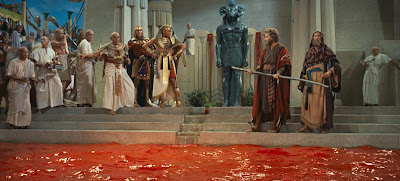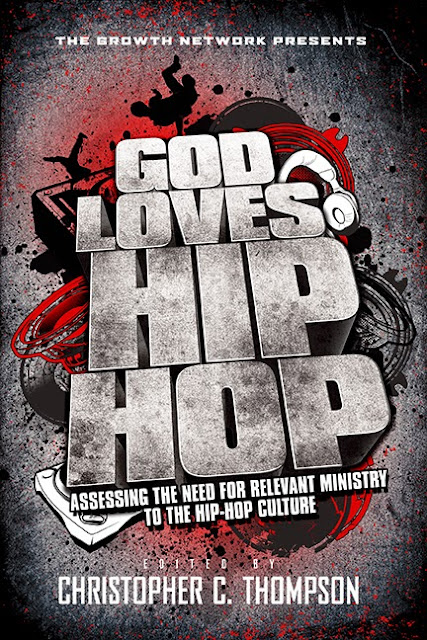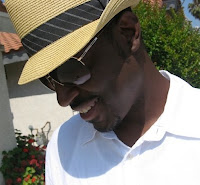 I'm amped and excited because we're adding a new piece to the God Loves Hip-Hop Series. You've already been following the Why We Need Hip-Hop series. Well now we begin a series of posts about Why God Loves Hip-Hop. And this first post "God Loves the World" is from a good friend of mine, Kurtley Elliott Knight. Kurtley is an exceptionally gifted communicator. He holds a Master of Divinity degree from Andrews University and currently serves as the pastor of the Hillcrest SDA Church in Pittsburgh, PA.
I'm amped and excited because we're adding a new piece to the God Loves Hip-Hop Series. You've already been following the Why We Need Hip-Hop series. Well now we begin a series of posts about Why God Loves Hip-Hop. And this first post "God Loves the World" is from a good friend of mine, Kurtley Elliott Knight. Kurtley is an exceptionally gifted communicator. He holds a Master of Divinity degree from Andrews University and currently serves as the pastor of the Hillcrest SDA Church in Pittsburgh, PA.
The statement that God
loves the world is so often spoken by Christians that most people, even atheists,
are familiar with its claim. So popular
is the statement that today it’s nearly impossible to walk into a church and
not hear some language grounded in this fundamental truth. As a pastor I think it’s great that many
people know the statement. The real
question however, is do we comprehend what it means for God to love “the world?” What is this “world” that God loves? Moreover, what are the implications that
arise from God loving “the world” for Christian theology and praxis, especially
in relation to our topic of God loving Hip-Hop?
In the pages that follow I’d like to suggest that God loves the entire creation. This includes all of humanity and everything associated with it. He loves human language, culture, art, literature and systems. He is intricately involved in the world as Sovereign, using what’s in the world to achieve His ultimate goal of reconciling the world to Himself. This holistic perspective I believe, opens our eyes to God’s activity around us, providing us with rich resources for Christian spirituality and ministry.
Coming to this conclusion is not easy and will require a redefinition of “the world.” For this, we’ll peek through the lenses of Hebraic monotheism, which claims God’s sovereignty over the universe. This perspective will help to clarify that all things (with the exception of the pagan) are sacred. With this in the background, we’ll briefly explore God’s love the kosmos as described in John’s writings. Lastly, we’ll briefly discuss the implications of the theological framework.
The
Sovereignty of God
Usually when most people
talk about God loving the world, it’s within the narrow confines of a personal
and private spirituality. Although this
perspective is certainly true, it doesn’t tell the whole truth. Rather it implies a modern dualism that
promotes a sacred versus secular divide. This divide prevents God from loving all
the world (as I’ve described above), because it’s seen as being outside of and
thus empty of God (hence the word secular).
This however was not the Hebraic worldview as expressed in the monotheistic biblical confession, called Shema Yisrael (Hear, O Israel):
“Hear, O Israel: The Lord our God, the Lord is one.5 Love the Lord your God with all your heart and with all your
soul and with all your strength.” These commandments that
I give you today are to be on your hearts. 7 Impress
them on your children. Talk about them when you sit at home and when you walk
along the road, when you lie down and when you get up. 8 Tie
them as symbols on your hands and bind them on your foreheads. 9 Write them on the doorframes of your houses and on
your gates.
Remember, this was
authored as the Children of Israel are preceding to cross the Jordan River. They are within the context of a polytheistic
culture where there was a god for every aspect of life (weather, rivers,
harvest, etc.). These gods controlled
not only their assigned area of life but also brought to the same meaning. Yet the ancient Hebrew won’t hear any of
this. To her Yahweh is not just the god
of the weather, the rivers, the harvest, or anything else. He is God over all, thus giving Him access
and oversight into all areas of life. This
is in part what the text means by saying that, “The Lord is One!” This declaration is a direct affront to the
claims of other gods, while simultaneously embracing the sovereignty of Yahweh
over everything.
 |
| When God used Moses to invoke the 12 plagues, He put Pharaoh and all off Egypt on notice that He is Sovereign LORD over all created things. |
This is the very meaning of what it means to be a Christian monotheist. The Shema is more than an ontological claim descripting the nature of God, but rather a theological lens to view all of life as under God. The missiologist and church planter, Alan Hirsch, identifies the outcome of such a theology. He states, “A genuinely messianic monotheism therefore breaks down any notions of a false separation between "the “sacred’ and the “secular.” If the world and all in it belongs to God, and comes under his direct claim over it in and through Jesus, then there can be no sphere of life that is not radically open to the rule of God. There can be no-God area in our lives and in our culture.”[i]
What exactly does this mean? It means that God is sovereign over “all” the earth because “all the earth” is under Him. It means that “the world” that God loves is not limited to any one area but everywhere. Therefore, the sovereign God is free to show up anywhere He decides, without our permission. For “from him and through him and to Him are all things (Rom. 13:36). Moreover, it means that because of God’s sovereignty “the world” makes up the “sacred” (those things under God), while excluding the “profane,” the things that are against God.
God Loves the Kosmos
 |
| God loves the world and everything in it because it is His creation. |
“The world” that God loves is His universal creation: that was made through Him and which He was apart (John 1:10), that He loves and does not condemn (John 3:16, 17), that He doesn’t want to take the disciples out of (John 17:15-18), that He brings light into which will shine as long as He’s present (John 9:5), that He removes the enemy from (John 12:31), and that He has conquered (John 16:33). It’s the world that He doesn’t want to abandon, sending both His disciples and the Holy Spirit (John 16:25-27). If God hates the world so much, if the world is such a terrible place, why go through all the trouble? Furthermore, it’s this world and not heaven that is our final home (Rev. 21).
This creation that is loved by God includes all of humanity from across the globe. This goes past just human beings; for how can we divorce human culture from human beings? How can one be separated from the history, environment, and family that make up who one is? This is impossible but what is attempted when we perceive God as just loving humanity but not everything associated with humanity, like culture. Think about it. It’s like a marine biologist trying to appreciate marine life while ignoring what the animals do under water. The marine biologist who loves marine animals must also love the environment (or culture) in which those animals thrive. If not, the biologist will not be able to truly love the animals because he or she lacks adequate understanding.
This is how I believe the apostle John perceives God’s love for the world. God must love human culture (art, music, dance, literature, etc.) howbeit fallen because He loves human beings who are fallen. He therefore cares about human systems and environments as He does the human being. This coupled with the Christian monotheistic claim of God’s sovereignty gives us a broader perspective of God’s love and redemption. God through Jesus Christ is sovereign over the entire world while loving and caring for it. The combination of these two realities gives God not only power in the world but freedom to bring all things under his feet so that God may be all in all (1 Cor 15:25, 28).
Why Does It Matter That God Loves The World?
The
above theological framework carries with it several implications. However, I will only list two here. First, there must be a recognition that God
works within the world. While He is a
supernatural being, we should see God as primarily working “naturally.” Namely, using human beings; thus, working
within human culture. Just as ancient
Israel confessed the Shema, we must confess that God is free to work however, wherever
He desires; including the culture we live in.
This practically plays out when Christians cease using language that
creates dualism between the church and the world. The coined Christian verbiage of “us” versus “them”
or “the church” versus “the world” isn’t beneficial. It only serves to create a wall between the “good”
people (Christians) and “bad” people (everyone else). When this is done, there’s no way we can admit
that God can work within the world. Let’s
not forget that we all are “bad” people. For “all have sinned…”
 |
| During the gold rush men became experts at finding gold. In the same way, we must discern God's work in the world. |
Second, there must be a responsibility to discern God within the world. It’s one thing to confess that God can work within the world but it’s another thing to discern it. Discernment is the ability to see through the gray of life, and identify the deeper value and quality of a thing. In this case, the surrounding human culture and systems. We must discern whether there is any value. We must discern whether or not the things within the world speak any truth. If so, we must listen. This is Paul’s meaning behind his comments to the Philippians, “Finally, brothers and sisters, whatever is true, whatever is noble, whatever is right, whatever is pure, whatever is lovely, whatever is admirable—if anything is excellent or praiseworthy—think about such things” (Phil. 4:8). This gives us license to survey all of the world in an attempt to identify its complex and sometimes hostile beauty. We’re liberated to discern the working of God in the singing of birds, the serenity of a lake, the laws of government, the beauty of fine art, the thoughtfulness of literature, the fun of pop, the mellowness of jazz, and the realism of hip hop. All of these areas and more are resources for Christian spirituality and ministry but only when we can discern God within them.
Conclusion
The
theme of this essay has centered on God’s love for the world. But what does that mean exactly? In short, I’ve argued that God is sovereign
over all creation and loves all creation.
This creation includes humanity along with its culture. Therefore God who both is sovereign over and
loves the world is free to use human culture in order to reconcile it. This provides the Christian with rich
resources for spirituality and ministry only one recognizing and discerns the
movements of God.
God is out there right now working in the world. He’s using artists, musicians, politicians, and anybody He can find (be they Christian or non-believers) to proclaim and defend truth. As sovereign, He’s subverting the kingdoms of this world in order to establish His Kingdom on earth as it is in heaven. However strong, God enlists more help. He enlists those who instead of criticizing the culture for its evils will, like Him, seek to subvert it with truth, hope and love. This can happen on a large scale or a personal one. The size of the participation is irrelevant. What’s important is that the people of God seek to love everything that makes up the world, as God does.
[i]
Alan Hirsch, The Forgotten Ways:
Reactivating the Missional Church (Grand Rapids, MI: Brazos Press, 2006),
94-95.








